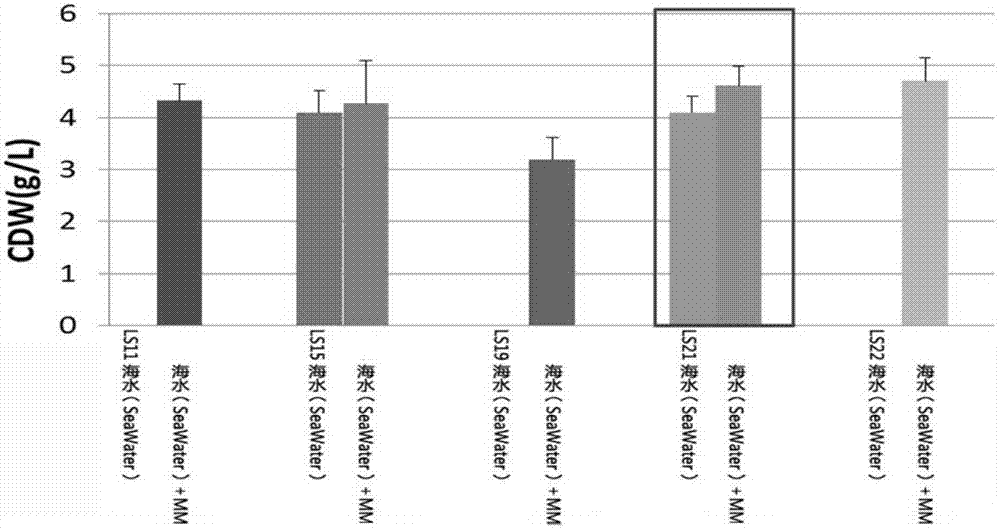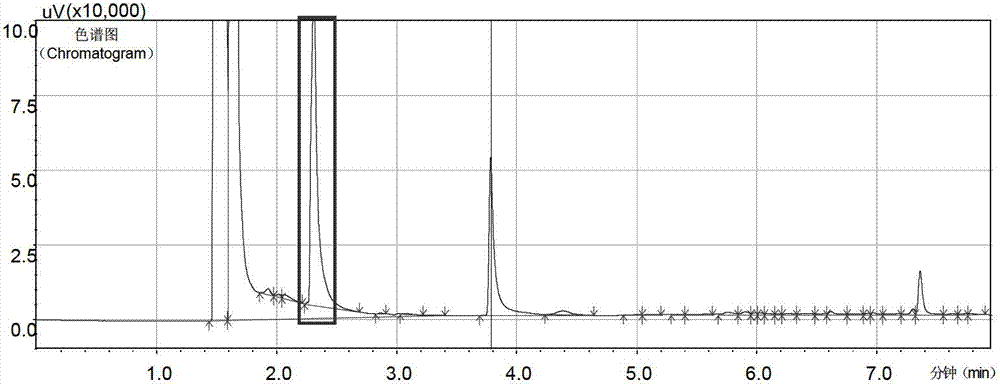Method for producing hydrocarbons for making fuel by using sea water as medium and special strain
A seawater and recombinant bacteria technology, applied in the biological field, can solve the problems of resource consumption, environmental pollution, difficult to treat wastewater, etc., and achieve the effects of low cost, simple nutritional requirements, and good industrial application prospects.
- Summary
- Abstract
- Description
- Claims
- Application Information
AI Technical Summary
Problems solved by technology
Method used
Image
Examples
Embodiment 1
[0061] Example 1. Isolation, identification and growth characteristics of Halomonas sp. LS 21
[0062] 1. Isolation of strain LS 21
[0063] Soil and water samples were obtained from Dabancheng Salt Lake in Xinjiang, and strains were isolated from them with cellulose as the only carbon source. Five strains that can produce and use cellulose as the sole carbon source were obtained, and one of the PHA strains that grew well and could accumulate was selected and named LS 21.
[0064] Production of cellulose medium: filter the straw cellulose soaking solution with gauze, filter out the residual straw, add NaCl (40g / L) and component I and trace element mixed solution in proportion, adjust the pH value to 10 with NaOH solution, After the precipitation was separated out, it was centrifuged at 5000 rpm for 5 min, and the supernatant was retained as straw cellulose medium.
[0065] Straw cellulose soaking solution: Weigh 6 g of gas-explosion-treated straw (obtained by drying corn sta...
Embodiment 2
[0083] Example 2. Application of Halomonas sp. LS 21CGMCC No.6593 in fermentation using seawater as medium
[0084] 1. Seawater preparation of fermentation medium
[0085] The use of seawater and kitchen waste is cost-saving, energy-saving and environmentally friendly, so it can be used as the raw material of the culture medium. Based on the above-mentioned purpose, the fermentation medium using seawater as the medium is developed and researched: natural seawater can be used, or the same or the same components can be used. Very similar artificial seawater formula (Mocledon formula) configuration simulation; the organic waste in the kitchen industry accounts for about 79% of moisture, about 29% of crude fat in dry materials, about 20% of crude protein, and 31% of starch. Mixed C source, N source and corresponding ratio simulation.
[0086] Natural seawater (NaCl content is about 26g / L) is used to configure the fermentation medium. The main ion content in the fermentation mediu...
PUM
 Login to View More
Login to View More Abstract
Description
Claims
Application Information
 Login to View More
Login to View More - R&D
- Intellectual Property
- Life Sciences
- Materials
- Tech Scout
- Unparalleled Data Quality
- Higher Quality Content
- 60% Fewer Hallucinations
Browse by: Latest US Patents, China's latest patents, Technical Efficacy Thesaurus, Application Domain, Technology Topic, Popular Technical Reports.
© 2025 PatSnap. All rights reserved.Legal|Privacy policy|Modern Slavery Act Transparency Statement|Sitemap|About US| Contact US: help@patsnap.com



